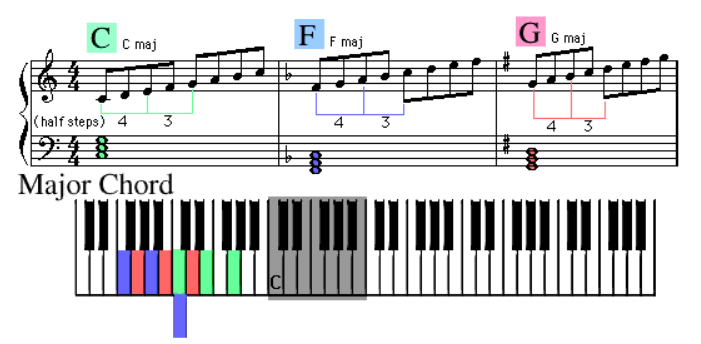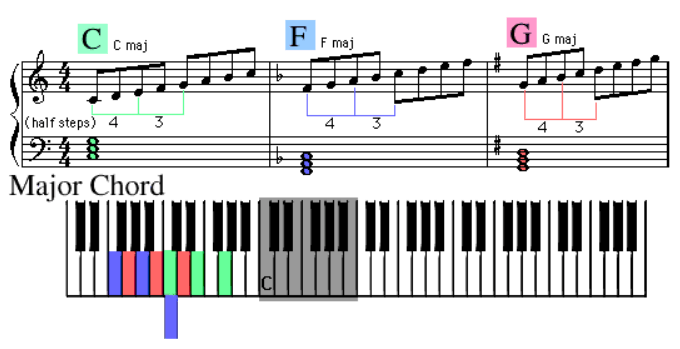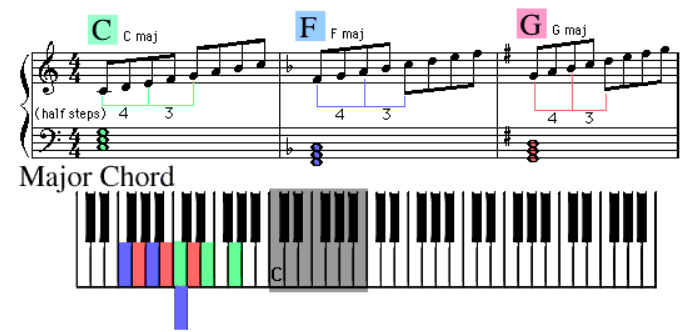Chords Simplified by Using Thirds
Next, let’s begin to simplify the chord formulas using whole and half steps.
The formula for constructing a Major chord would be:
Two whole steps + one and one half whole steps
Using Major and Minor Thirds to Build Chords
Two whole steps is called a Major third. Any note combination that is two whole steps apart anywhere on the keyboard is called a Major third.
One and one half whole steps is called a minor third. Any note combination that is one and one half whole steps apart anywhere on the keyboard is called a minor third.
Now, using major and minor thirds, let’s construct our finished formulas:
Minor chords (such as Am, Dm, and Em)
minor third + major third
Dominant seventh chords (such as C7, F7, and G7)
major third + minor third + minor third
Minor seventh chords (such as Am7, Dm7, and Em7)
minor third + major third + minor third
Major sixth chords (such as C6, F6, and G6)
major third + minor third + 1 whole step (see note*)
Major seventh chords (such as Cmaj7, Fmaj7, and Gmaj7)
major third + minor third + major third
*Note: one whole step is called a Major second. Any note combination that is one whole step apart anywhere on the keyboard is called a Major second.
Record all of these chord formulas in your music note book.
You can also note that:
Major third = 4 half steps
minor third = 3 half steps
Major second = 2 half steps
minor second = 1 half step




